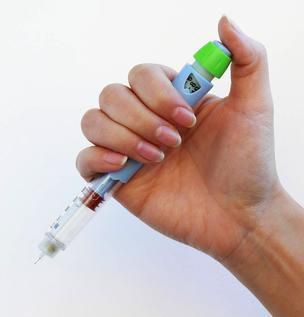Insulin Production, Higher Levels of IL-35 Found in Some Patients with T1D
Many patients with type 1 diabetes (T1D) may continue to produce insulin, according to new study.

A new study is adding to the case that many patients with type 1 diabetes (T1D) continue to produce insulin. The findings could have major implications for future treatment pathways.
Researchers from Uppsala University in Sweden studied more than 100 patients with T1D and found that more than half were still producing some small amounts of insulin. Moreover, patients whose bodies continued to produce insulin 10 years after diagnosis had significantly higher levels of the signal protein interleukin-35 (IL-35) in their blood. The protein has anti-inflammatory properties that can help fight off attacks on the immune system.
The discovery of functioning beta-cells in some patients with T1D was made possible by sophisticated new insulin assays, which are able to detect and quantify smaller amounts of insulin that had previously gone unnoticed. The findings of this study are in line with a 2015 study, although the percentage of patients found to be producing insulin varied in the 2 studies.
Uppsala University’s Daniel Espes, MD, and colleagues, examined 113 patients with T1D. All of the patients were at least 18 years of age, and all had been diagnosed with T1D at least a decade prior. After finding that nearly 1 in 2 patients was still producing insulin, the research team examined the plasma of the T1D patients, as well as control subjects, to identify cytokines in the blood.
“Patients with remaining endogenous beta-cell function after >10 years duration of type 1 diabetes differ immunologically from other patients with long-standing type 1 diabetes,” the authors found. “In particular, they have a much higher IL-35 production.”
The gap in IL-35 production is interesting, in part because the researchers previously found that people with T1D have lower rates of IL-35 than the general population. That finding held true regardless of whether the patient had only recently been diagnosed with T1D, or whether they had had the disease for many years.
The researchers also found evidence that IL-35 plays a vital role in the development of T1D, and suggested that it could be used as the basis for T1D treatment, or even prevention, in the future.
Before such a treatment could be developed, a number of questions remain. While the new study showed that some patients with T1D retain much higher levels of IL-35, and the previous study showed that they generally have lower levels of IL-35 than the general population, it’s not known precisely when the divergence between the IL-35 levels emerges. It’s possible the difference is already noticeable at diagnosis, or it could be that some patients’ bodies respond differently postdiagnosis.
Espes and colleagues pointed to at least 2 questions research paths worthy of investigation. First, they suggest the development of IL-35 based treatments, since IL-35 appears to be related to insulin production. They also argue that researchers should more closely study the patients with T1D with partially functional beta-cells to find ways to activate the rest of their beta-cells. The Uppsala University research team has already embarked on preliminary work to study the latter question.
Diabetes Care
The new study is titled “Increased Interleukin-35 Levels in Patients With Type 1 Diabetes With Remaining C-Peptide.” It was published last month in and can be accessed here.
RELATED COVERAGE:
Intestinal Viruses Appear to Correlate with T1D Risk
Organ Donors with Type 1 Diabetes Show High Rates of Illicit Drug Abuse
Helping Youth with Type 1 Diabetes Improve Transition from Pediatric to Adult Care